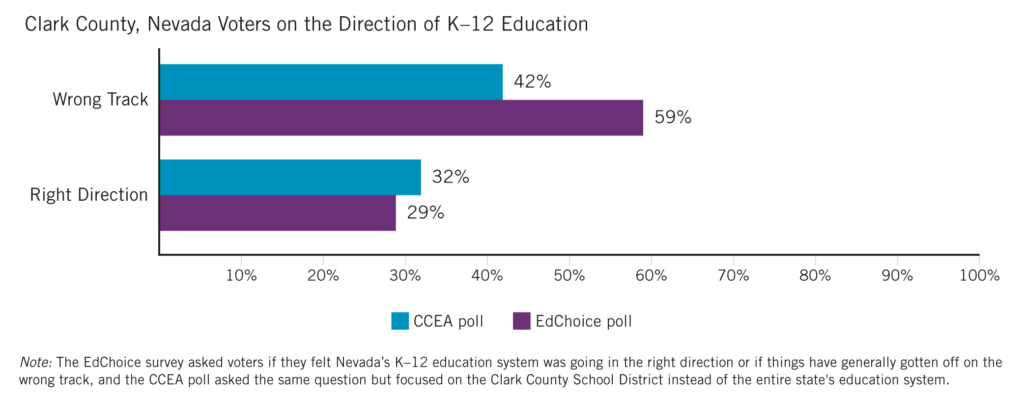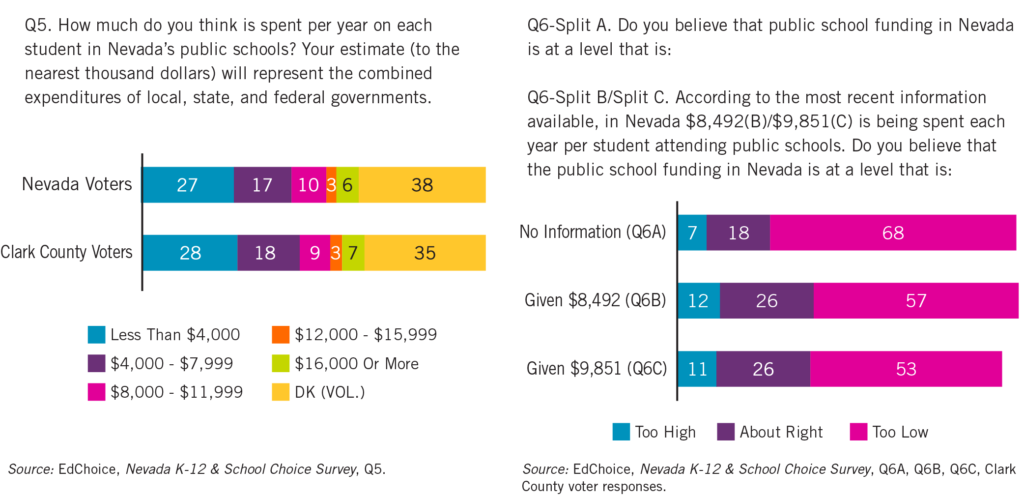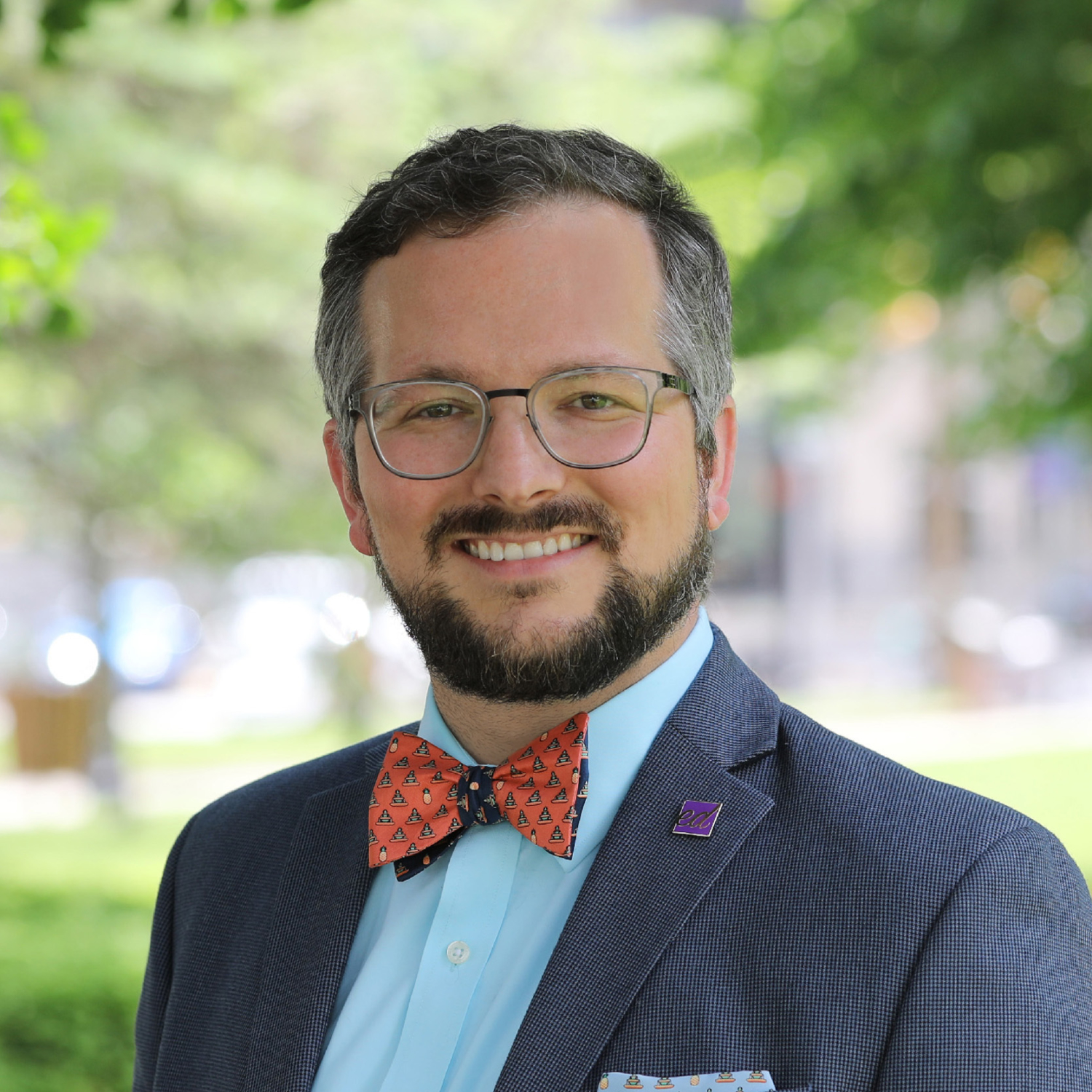Nevada Teachers’ Union Poll Finds Support for Educational Choice
A Clark County voter poll commissioned by Nevada’s Clark County Education Association (CCEA), a local teachers’ union, and conducted by Quirk Global Strategies made the rounds in the news over the last week. This poll of 500 Clark County voters, administered in November, has some questions similar to those from EdChoice’s Nevada K–12 and School Choice Survey that was administered in January 2015 with 430 respondents from Clark County.[1] Let’s take a look at some of the comparisons of responses from Clark County voters in each poll.
The EdChoice survey asked voters if they felt Nevada’s K–12 education system was going in the right direction or if things have generally gotten off on the wrong track, while the CCEA poll asked the same question but focused on the Clark County School District instead of the entire state. The EdChoice poll found 29 percent of Clark County voters saying “right direction” and 59 percent “wrong track,” while the CCEA poll found 32 percent saying “right direction” and 42 percent saying “wrong track.”
It’s common for poll respondents to feel better about something local than an overall system; we see the same kind of responses, for example, when people are asked how they feel about Congress as a whole versus the member of Congress who represents them.
It’s extremely interesting that the CCEA poll shows the percentage of respondents who think education funding needs to be increased, but they never provided respondents with the actual amount of money currently being spent.
The EdChoice survey results show that only 9 percent of Clark County voters could guess the correct range for dollars being spent per year on each student in Nevada’s public schools. Our results also show that when given the actual dollar amount, the percentage of voters saying the amount is “too low” drops by 13 points.
This drives home the need to ensure that everyone is making judgments based on data available as opposed to what they guess things to be.
The CCEA survey and the EdChoice survey both asked Carson City voters about education savings accounts (ESAs). This is an extremely interesting case where voters were asked their views both before and after Gov. Sandoval signed Nevada’s ESA bill into law this summer.
The EdChoice poll shows that before the state’s ESA program existed, 60 percent of Clark County voters would favor an ESA—more than the 58 percent of voters statewide. The CCEA poll used a split-sample and asked voters if they favor or oppose ESAs “which give parents $5000 to spend on their child’s education in any way they want,” with half of the voters being asked about the ESAs “as created by Governor Sandoval.” The split that were asked the general question had 49 percent in favor; the split that were asked about ESAs as created by Gov. Sandoval had 57 percent in favor.
Either way, there’s support for ESAs, but there’s a seemingly minor wording aspect of the CCEA survey that’s misleading: Parents can’t spend ESA dollars “in any way they want.”
Nevada’s ESA program limits expenditures to categories such as private school tuition, distance learning programs, tutoring, curriculum therapy, post-secondary educational institutions in Nevada and other educational services explicitly defined in the state’s statues. There are controls in place under the law to prevent waste or fraud. While this might seem like a minor oversight, phrasing is paramount when it comes to survey research.
Personally, I commend the CCEA for transparency in their polling results. However, I think their poll egregiously synonymizes compromise and collaboration. In fact, their poll report shows that they coded respondents saying that the legislature and the governor need to “Work Together” to start solving problems facing education in Nevada as falling into the “Compromise” bucket. Working together does not always go hand-in-hand with compromise. Who compromises in a win-win situation? Families choosing the educational environment that works best for their children and the Nevada government spending fewer dollars on education sounds more like the latter than the former. The CCEA might not agree, as true educational choice could theoretically translate into a slight decline in their dues-paying membership.
Semantics aside, an ESA compromise is not the best solution for all families in the state. Nevada’s ESA program is already nearly universal, and any proposed reduction in program eligibility would be a slap in the face to the families that have already submitted more than 8,200 applications. It is our hope that the Governor and Nevada Assembly will find a way to deliver educational choice for those families who are counting on ESAs as the path forward to help their students flourish.
[1] The survey was conducted by Braun Research, Inc., and was commissioned by the Friedman Foundation for Educational Choice, whose name changed to EdChoice on July 29, 2016.






